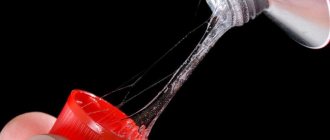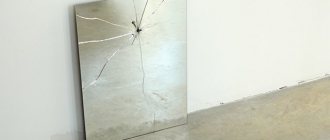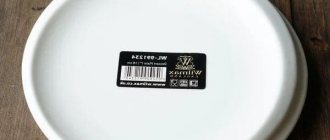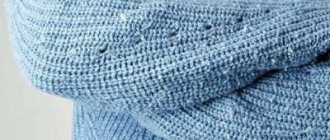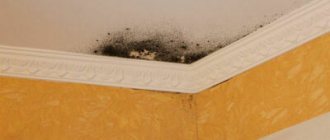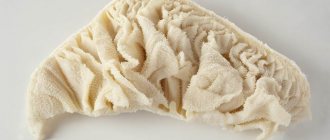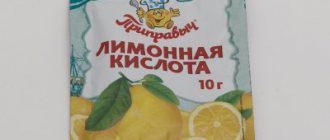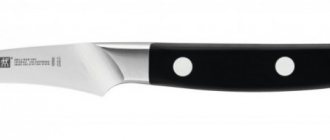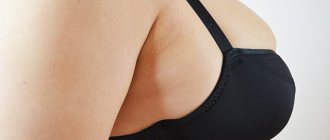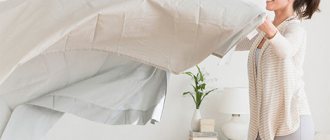If we consider liquid wallpaper as an alternative to modern decorative plasters and all kinds of paints, it should be noted that they are very similar.
However, when applied to a work surface, the structure is different and the result is different. With their help you can create your own interior design. Today, ZhO can be easily purchased at any specialized hardware store. They are sold dry in sealed packaging. The shelf life and application technology are indicated on the back side.
But today we are not interested in the method of applying the finished mixture to the wall, but in caring for the liquid. In particular, the question is about ways to care for them.
What is liquid wallpaper
The composition of dry mixtures includes various raw materials. Such as:
- Cotton.
- Linen.
- Cellulose.
- Glitter.
As well as special adhesive mixtures.
Thanks to natural elements, liquid wallpaper is considered a clean, environmentally friendly raw material. They can be used to decorate walls in any technical and residential premises, or applied to wall surfaces in children's rooms. The material is easy to use. Both professionals and novice builders at the household level can work with the mixtures. If you follow the manufacturer's instructions and follow the sequence of actions, then there will be no problems when applying them.
Preparing the room for removing liquid wallpaper
When starting the process of removing “liquid silk”, you must first prepare the room. After all, during work a lot of wallpaper dust, excess liquid and debris are formed. Therefore, you need to perform preparatory steps:
- Remove light armchairs, bedside tables, tables, and so on.
- Cover heavy furniture and other items with oilcloth.
- Cover door jambs, window sills and window slopes with film as well.
- Remove frames from external sockets and switches. Seal them with molar tape.
- Cover the baseboards and the entire floor surface with protective material.
- Do the same with all spotlights.
When starting the process of removing “liquid silk”, you must first prepare the room.
In addition, you need to prepare all the tools that will be useful for dismantling:
- Spatulas of different shapes.
- Painting knife and tape.
- Water.
- Special hairdryer.
- Sander.
- Construction brush.
- Ladder.
- Household chemicals.
- Garbage bags.
- Rubber gloves.
It is necessary to prepare all the tools that will be useful for dismantling.
With such careful preparation, the owner will not have to worry about damaged interior items and furniture, and the work itself will go quickly enough.
How to care
The issue of caring for liquid wallpaper is not at all idle. The service life of the product depends on the correctness of actions. It is important that due to the antistatic properties of LW (liquid wallpaper), dirt, dust and other debris are practically not attracted to the lined surface.
But, in any case, the finishing needs regular, and most importantly, proper care. If you carefully read the manufacturer's instructions, it will become clear that you CANNOT wash the JO! So how to clean liquid wallpaper from dirt, how to remove small fractions of debris? Manufacturers and experts advise using the dry cleaning method.
In particular, you can effectively care for a lined surface using a household vacuum cleaner. If dirt appears on the wall during use, you can easily remove it using an eraser. You just need to work with it carefully so as not to damage the drawing.
If more serious problems arise than ordinary pollution, the problem area will require partial replacement of the wallpaper. In this case, the technology for applying liquid liquid is similar to the initial treatment of the wall surface.
Features of cleaning different surfaces
Depending on the surface on which the wallpaper is applied, the methods for removing it will differ:
Do not use a grinder to remove liquid wallpaper from drywall.
It will lead to damage to the base material. Only manual surface treatment is possible. In this case, the drywall should not be allowed to get wet, so improvised means should not be used.You need to apply those substances that act as quickly and effectively as possible. The choice is made in favor of professional cleaners.
They are left on the coating for the minimum amount of time specified in the instructions. If it was not possible to remove the wallpaper the first time, the procedure is repeated, but the exposure time should also not be more than 5-10 minutes.
- You can remove wallpaper from a wooden surface using a hair dryer. They bring it to the wall, plug it in and wait until the coating becomes soft. In the molten state, it can be easily cleaned off with a spatula. Having chosen this processing method, it is important to ensure that the wood does not begin to char, since the power of the construction hair dryer is high.
- Concrete is the most unpretentious base. There are no restrictions on its cleaning. Concrete walls are treated with improvised solutions and store-bought compounds. They are not afraid of prolonged contact with liquids. Coated wallpaper can be cleaned with a sander. The main thing is not to put too much pressure on the wall, so as not to remove a thick concrete layer along with them.
Is it possible to wash
Answering the question: is it possible to wash liquid wallpaper, the answer is yes. But, you need to follow a number of rules, which will be discussed below. To avoid damaging the surface:
- Do not use chemical cleaning agents.
- Do not remove dirt using sandpaper, a wire brush, or other abrasive materials.
- When treating the surface, you do not need to use a large amount of water. In this case, the wallpaper quickly swells, absorbing moisture, and loses its water-repellent properties. In addition, using water in large quantities will inevitably lead to mixing of contaminants with the adhesive composition.
Options for removing liquid wallpaper from walls
How to remove liquid wallpaper from walls? The method of dismantling “liquid silk” depends on the type of wallpaper, the surface behind it and the preferences of the artist. Below you will find various dismantling methods and step-by-step instructions.
The method of dismantling “liquid silk” depends on the type of wallpaper, the surface behind it and the preferences of the artist.
Spatula
If an additional layer of paint is not applied to the cladding, it can be removed from the walls with a spatula. This is done like this:
- After thoroughly preparing the room, prepare a homemade mixture or use a store-bought one.
- Next, the surface of the walls is soaked with this solution using a large sponge cloth or a soft roller.
- Pass with a brush or small sponge dipped in solution over inaccessible spaces and corners.
- When half an hour has passed, everything done above is repeated.
- The algorithm is repeated again until the material turns into a kind of paste state.
- When the wallpaper is completely wet, remove it with a spatula.
- In the place where the putty knife cannot remove the material, the wall is re-wetted and cleaned again.
If an additional layer of paint is not applied to the cladding, it can be removed from the walls with a spatula.
Grinding machine
The method using a sander is used when the liquid wallpaper is painted on top with varnish or paint. The process itself goes as follows:
- Protective equipment (respirator, goggles, gloves) is put on the face and hands.
- “Liquid silk” is cleaned off with a grinding machine. In this case, the tool must be applied well directly to the wall.
- Every half hour there is a break of 10 minutes to cool down the machine and rest. It is worth knowing that for every 10 square meters it can take up to 12 hours of working time.
- Next, the garbage is removed.
The method using a sander is used when the liquid wallpaper is painted on top with varnish or paint.
Industrial hair dryer
An industrial hair dryer is used when work is done manually using a spatula. This algorithm is given above. A hairdryer is needed to easily remove wallpaper from difficult places. They are simply warmed up and cleaned with hand tools.
An industrial hair dryer is used when work is done manually using a spatula.
Steam generator
The operating principle of the steam generator is similar to the operating principle of an industrial hair dryer. Only the entire surface of the wall is treated with a steam generator, and not just hard-to-reach places. Next, the lining is cleaned with a spatula. When everything is done correctly, the steamed wallpaper can be removed very quickly and without much effort.
The steam generator is used to treat the entire surface of the wall, and not just hard-to-reach places.
Using a special solution
To prepare a concentrate for cleaning walls from liquid wallpaper you will need:
- Grate the laundry soap using a coarse grater or plan it with a knife;
- Dilute in 4 liters of liquid;
- Bring the resulting mass to a boil.
Next, the surface is wetted with this mixture and the old wallpaper is cleaned off with a spatula.
It is possible to prepare a mixture of household chemicals (but not acidic) and water. All ingredients are mixed and this mass is spread on the wall. After which the liquid silk is also removed with a hand tool.
Also, if the owner does not want to spend time preparing the mixture, you can find a special remover for liquid wallpaper in a hardware store.
The surface is moistened with a mixture of laundry soap and the old wallpaper is scraped off with a spatula.
Other possible options
It is also possible to remove liquid plaster from walls using a regular iron. This is done like this:
- The iron is heated to maximum values.
- An unnecessary clean cloth is soaked in liquid and squeezed out.
- The fabric is applied to the liquid plaster and ironed over it up to 6 times.
- Next, the iron and fabric are removed, and the surface is cleaned with a spatula.
- The algorithm is repeated until the entire surface has been processed.
It is also possible to remove liquid plaster from walls using a regular iron.
How to wash liquid wallpaper when cleaning
It's simple: the surface of the wall or a section of wallpaper needs to be wiped with a slightly damp cloth.
Since liquid wallpaper has antistatic properties, frequent treatment is not required.
The issue of servicing liquid metal parts is simpler if they are pre-varnished.
Varnish is known to have water-repellent properties. You can wipe the walls with cleaning products or water. Most often, varnishing at the final stage of applying liquid wallpaper is necessary in rooms with a high degree of humidity. This:
- bathroom;
- toilet;
- kitchen.
The use of varnish in the hallway or living spaces did not justify itself: high costs without a clear effect. In addition, it must be taken into account that after varnishing the silk structure loses the ability to repair individual fragments.
In addition, when renovating premises, it is very difficult to remove liquid coatings coated with varnish; you need to know and remember this.
Helpful information
Tips for removing liquid wallpaper from the wall:
To prevent the material from becoming too dusty when removing liquid wallpaper using a sanding machine, the wall can be moistened with plain water. It is sprayed with a spray bottle.- To reduce time, it is not necessary to strip the wallpaper down to the concrete.
Many craftsmen remove only the relief, after which the smooth wall is primed, puttied and a new coating is applied. This is true for varnished wallpaper. Particular attention should be paid to damaged areas that have chips or other damage. - When working with electrical appliances, it is better to use an extension cord connected to an outlet in another room. The wall from which the coating is being removed must be de-energized to avoid electrical shock.
- To treat large areas, it is recommended to use wide spatulas and rollers. This will reduce the time and effort required to clean the wall from the decorative coating.
